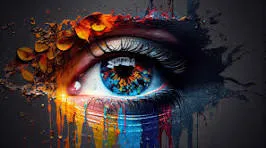How to Choose the Best Graphic Design Service for Your Needs:
In today’s highly competitive digital world, visual content is king. Whether you are a small business owner, a large corporation, or an individual entrepreneur, having high-quality graphic design service is essential to stand out in the marketplace. From logos and websites to brochures and social media posts, graphic design plays a crucial role in shaping your brand’s identity and connecting with your audience.
But choosing the right graphic design service can be a daunting task. With so many options available, how can you determine which service will best meet your needs? Here’s a comprehensive guide to help you select the best graphic design service for your business or project.

1. Understand Your Graphic Design Service Needs
Before diving into the search for the perfect graphic design service, it’s important to identify exactly what you need. Graphic design is a broad field, and the requirements for different projects vary. Some of the most common design needs include:
- Logo Design: A unique and memorable logo is essential for brand identity.
- Web Design: The layout, look, and feel of your website are critical in user experience.
- Social Media Graphics: Engaging visuals for Facebook, Instagram, Twitter, and other platforms.
- Print Materials: Business cards, brochures, posters, and flyers.
- Packaging Design: Custom packaging to make products stand out on the shelves.
Taking the time to define your needs ensures that you can choose a designer or agency that specializes in the type of design work you require.
2. Determine Your Budget For Graphic Design Service:
Once you have a clear understanding of what type of graphic design services you need, the next step is to figure out your budget. Prices can vary widely based on the designer’s experience, the complexity of the project, and whether you are working with a freelancer or a full-service agency.
- Freelancers tend to be more affordable than agencies, but their workload may limit their availability. Additionally, you may need to manage multiple freelancers if you require various types of design work.
- Agencies offer a full suite of services, including project management, which can be helpful for larger projects or ongoing design needs. However, they tend to be pricier.
Remember, while it’s tempting to go with the cheapest option, quality matters in design. A low-cost service might cut corners or deliver subpar results that could hurt your brand in the long run. Set a realistic budget based on the value you place on good design.
3. Research Portfolio and Experience:
The best way to gauge a graphic designer’s capability is by reviewing their portfolio. A strong portfolio gives you a clear idea of their style, skillset, and the kind of work they have done in the past. When assessing a portfolio, consider the following:
- Relevance to Your Industry: Look for designers who have experience working in your industry or with businesses similar to yours. While design principles are universal, specific industries often have unique visual needs and trends.
- Diversity of Work: A versatile designer will be able to adapt their style to meet various needs. Look for diversity in the types of projects, such as branding, packaging, and digital designs.
- Quality of Work: Is the design work polished, professional, and visually appealing? Pay attention to the details, such as color choices, typography, and overall composition.
Additionally, ask the designer about their experience working with clients of your size and scope. If you’re a small business, working with a designer who has experience with startups or small-scale projects can be beneficial.
4. Evaluate Communication and Collaboration Skills:
Graphic design is not just about making things look pretty—it’s about solving problems and communicating effectively. A good graphic designer should be able to listen to your needs, understand your brand, and provide valuable insights. Communication is key, as it will determine how smoothly the project progresses.
- Clear Communication: A designer who is easy to talk to and who clearly explains the design process will ensure there are no misunderstandings along the way.
- Collaborative Approach: You should feel comfortable giving feedback and making adjustments. A designer who welcomes collaboration and values your input will help create the best possible design.
- Availability and Responsiveness: Timely responses and a clear timeline for the project are crucial. If the designer is unresponsive or difficult to reach, it may lead to delays and frustrations down the line.
Set clear expectations from the beginning regarding communication, deadlines, and the number of revisions included. This will help prevent misunderstandings and ensure the project stays on track.
5. Check Reviews and Testimonials:
To get an honest sense of a designer’s strengths and weaknesses, take the time to read reviews and testimonials from previous clients. Many designers and agencies display client feedback on their websites, but you can also check independent review platforms like Google Reviews, Clutch, or Trustpilot.
Look for designers who have positive feedback regarding their professionalism, creativity, and ability to meet deadlines. You can also ask for references from past clients, especially those who had similar design needs to yours. Hearing firsthand accounts of other businesses’ experiences with a designer can give you valuable insights.
6. Assess the Design Process:
Different designers may have varying approaches to the design process. While it’s important to find someone whose style aligns with your vision, you should also consider how they work. A good design process includes:
- Initial Consultation: This is where the designer learns about your business, your goals, and your preferences. They should ask questions about your target audience, competitors, and the message you want to communicate through design.
- Research and Concept Development: A skilled designer will conduct research to understand your industry, target audience, and competitors. They will then develop design concepts based on this information.
- Revisions and Refinements: Make sure the designer is open to feedback and willing to refine the design based on your input. This iterative process helps ensure the final product aligns with your vision.
- Delivery and File Formats: The designer should provide you with all necessary design files in formats that are compatible with your intended use, such as high-resolution files for printing or web-optimized files for digital platforms.
Understanding the designer’s process helps you gauge whether they will be a good fit for your needs and expectations.
7. Consider Long-Term Relationships:
Graphic design is not a one-time service but an ongoing need for most businesses. A great graphic designer can evolve with your brand, helping you maintain a cohesive visual identity over time. As your business grows and your design needs change, you may require new logos, marketing materials, or website updates.
Consider whether the designer or agency you choose is someone you can build a long-term relationship with. A designer familiar with your brand will be able to create designs that stay consistent with your overall identity, while also staying fresh and innovative.
8. Look for Flexibility and Creativity:
A great designer should be able to push boundaries while staying true to your brand’s identity. When interviewing potential designers, ask about their creative process and how they incorporate your feedback while still adding their own creative touch.
The ability to think outside the box and create unique, original designs that reflect your brand’s personality is a crucial factor in finding the right designer. Flexibility is equally important, as the designer should be able to adapt their style to different types of projects while keeping the overall brand cohesive.
9. Consider the Timelines:
Finally, timelines are an important factor to consider when choosing a graphic design service. If you’re working on a tight deadline or have a time-sensitive project, you’ll need to make sure the designer can deliver on time. Discuss timelines up front, and ensure there is a clear understanding of when the work will be completed and any potential delays.
A professional designer should be able to provide an estimated timeline based on the scope of the project and communicate any potential roadblocks as the work progresses.
Conclusion:
Choosing the best graphic design service is a critical decision that will affect your brand’s image and overall success. By clearly defining your needs, evaluating portfolios and reviews, considering your budget, and assessing the designer’s communication and process, you’ll be well-equipped to find a designer who can bring your vision to life.
Remember, good design is an investment, not an expense. By partnering with the right designer, you can create visuals that not only enhance your brand but also help you connect with your target audience and achieve your business goals.

